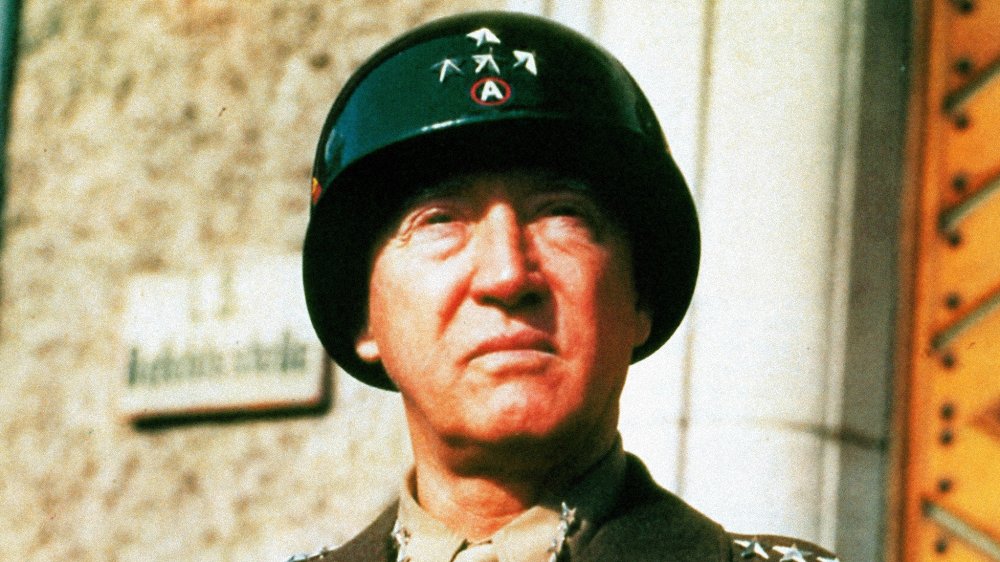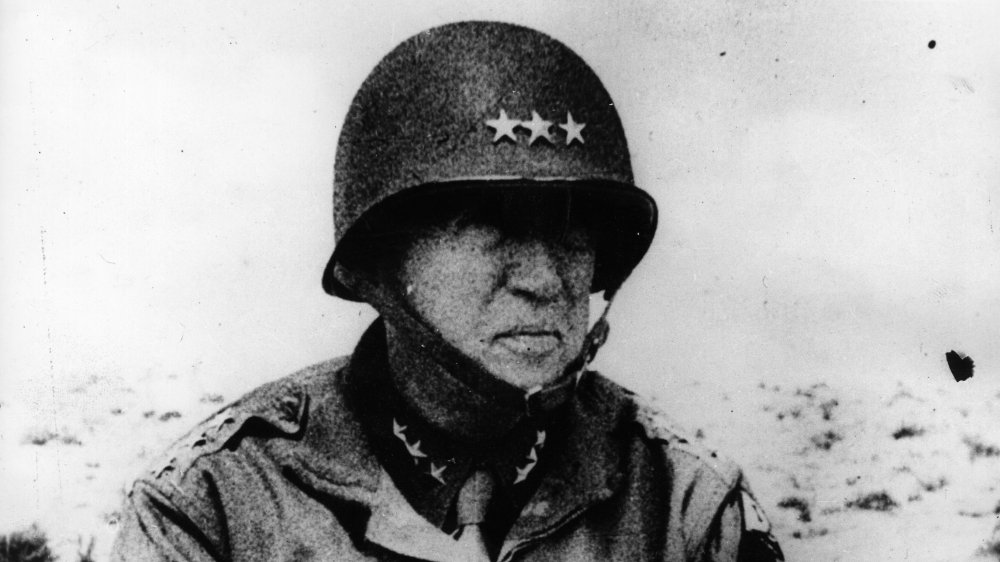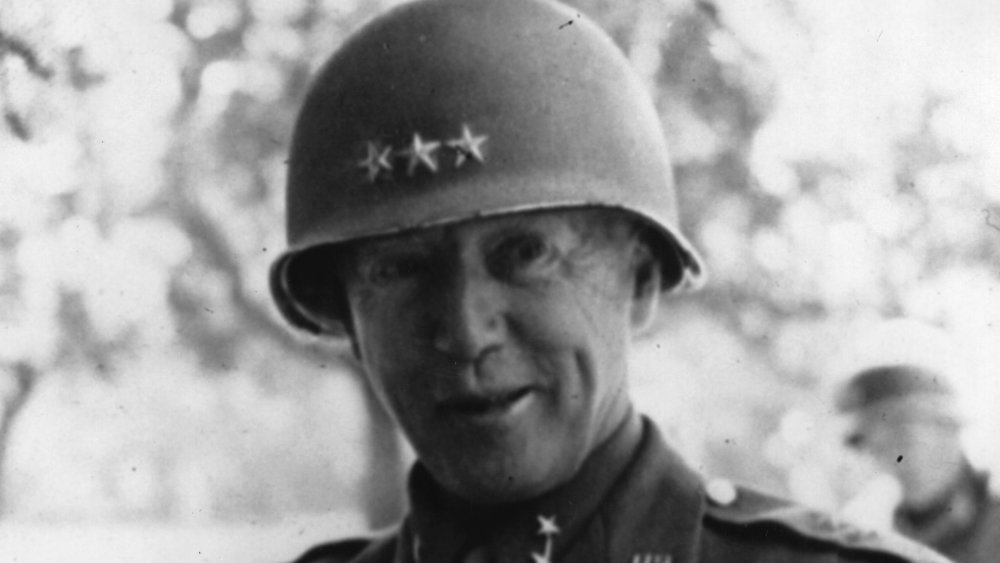The Tragic Death Of General George S. Patton
George Smith Patton Jr. — a four-star general at the end of his career — was one of the preeminent military figures of World War II. Under his leadership, American troops reversed the Allies' fortunes in North Africa, liberated Sicily, and saved the U.S. troops threatened with annihilation during the Nazi counterattack known as the Battle of the Bulge. He was a West Point graduate who'd seen combat more than once on his way up the ranks, and was seriously wounded during his service in World War I, as Biography tells us. He cheated death more than once, created headlines for his outspoken opinions about the conduct of the war and U.S. foreign relations, and was referred to by his men, not necessarily charitably, as "Old Blood and Guts."
With such a controversial, storied career, few would have predicted that the warrior would meet his end in a hospital bed, in his sleep, after a car accident.
A less than fitting end to a storied career
By late 1945, the war in Europe was won. Patton had requested an assignment commanding troops in the South Pacific, where the U.S. was finishing its fight against the Japanese Empire, but he was refused. Instead, Patton was assigned as military governor of Bavaria, where he caused more controversy by hiring former Nazis to help run the district — his argument was that they already knew what they were doing. He also spoke against alliances with Russia — the U.S. should continue the war by pushing Russia back into its original frontiers. Finally his superior officer, Dwight Eisenhower, relieved him of command of the Third Army in October 1945 and essentially assigned him a desk job, overseeing a history of the European campaign.
Patton was less than happy with the assignment and confided to his wife that he would be home for Christmas, and after that, might well retire. He turned 60 that November. Warfare History Network relates that Patton had become withdrawn, moody and tense, and given to taking long drives by himself. Patton's chief of staff, General Hobart Gay, tried to raise Patton's spirits by suggesting a hunting trip. They left the next day in Patton's Cadillac, with an enlisted soldier at the wheel, Patton and Gay in the back seat. A jeep followed, carrying their hunting equipment, driven by Technical Sergeant Joe Bruce.
In the suburbs of Mannheim, shortly before noon, a U.S. Army truck pulled in front of the Cadillac. The driver and General Gay saw the collision coming and braced themselves. Patton had been looking out the window and the impact threw him forward against the metal frame of the glass partition between the front and back seats.
He died from injuries suffered in a car accident
He remained conscious, although his head was cut to the bone. His neck was damaged as well, and he said, "I think I'm paralyzed." He added a little later, "This is a helluva way to die." It took an ambulance about an hour to get to the scene of the accident. Patton was transported to Heidelberg, 15 miles away. Hospitalized there, it was determined that he was paralyzed from the neck down. His third cervical vertebra was fractured; his fourth was dislocated.
Patton was placed in traction, an incredibly painful form of therapy. An English orthopedist was flown in, who advised a different, but equally painful, form of therapy for the injured general. After nine days, Patton's condition stabilized and he was put in yet another form of traction, involving a sort of jacket made of plaster.
His wife flew in from the states on December 11. Despite the improvement, Patton's condition remained extremely grave. Given the state of medicine in those times, it was impossible to operate on Patton's neck in order to relieve the paralysis. Patton himself seemed resigned to his fate; when he saw his wife, he said to her, "I'm afraid, Bea, this may be the last time we see each other."
On December 20, medical staff gave Patton oxygen to restore his breathing; an x-ray revealed a small pulmonary embolism in his upper right lung. The next day, shortly before 6 p.m., another embolism struck — fatally, says History — this time in his left lung.
Rumors about his death began immediately
Patton was buried in a U.S. military cemetery in Luxembourg. Almost immediately, rumors began to circulate that Patton had been the victim of an assassination plot, despite all evidence to the contrary. As recently as 2017, Bill O'Reilly, then a fixture of Fox News, published a new entry in his "Killing" series books, Killing Patton, co-written by Martin Dugard. According to O'Reilly, Patton was killed under orders from Soviet dictator Joseph Stalin. O'Reilly told USA Today that his book contained "compelling evidence" of the conspiracy. "We believe he was poisoned in the hospital."
Also almost immediately, historians weighed in on the O'Reilly theory, pronouncing it rubbish. As ThoughtCo points out, none of Patton's doctors were surprised when he quietly died in his sleep. His situation was grave; why bother poisoning a man who was already on death's door? In an interview with Page Six, O'Reilly also claims that documents regarding Patton's case have "disappeared." According to O'Reilly, Patton's "final moments can't be examined or explained." Even though, clearly, they have been, and are. In June 2017, AdWeek reported that National Geographic had declined the opportunity to turn Killing Patton into a movie.


